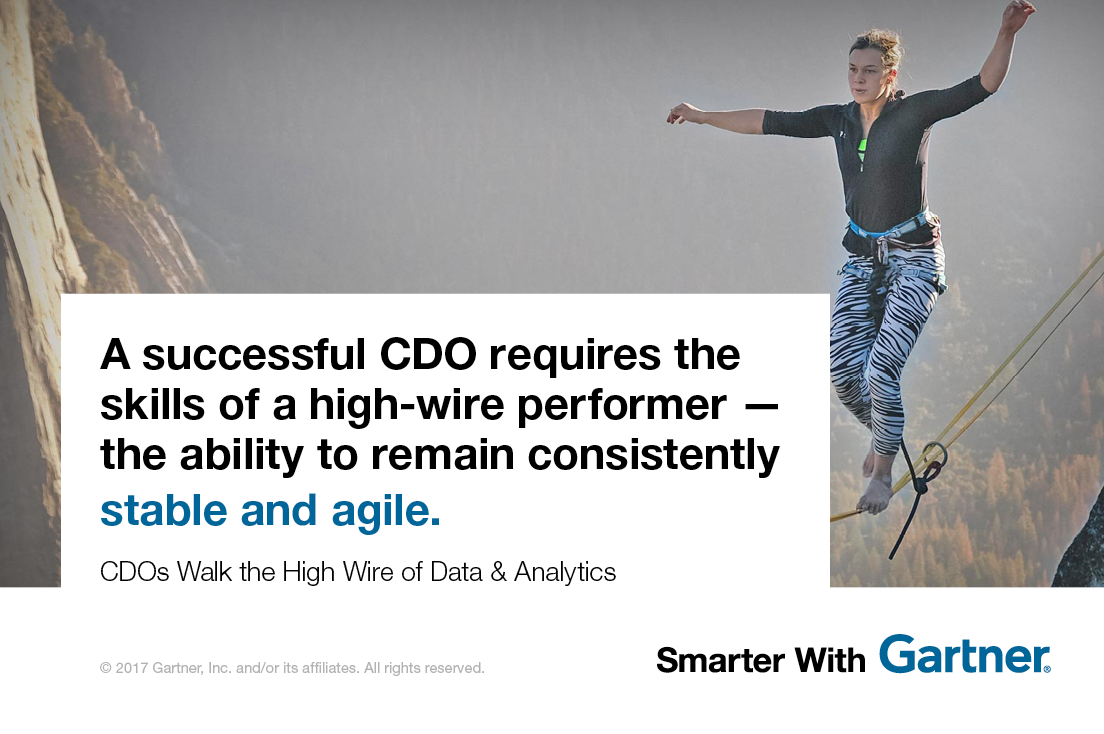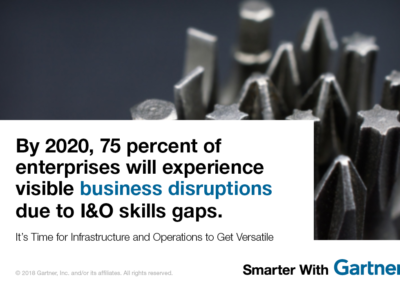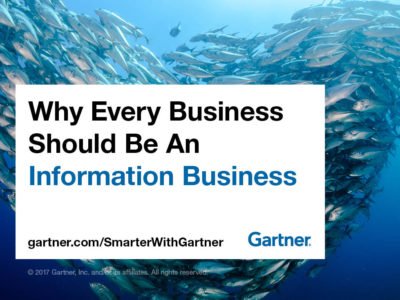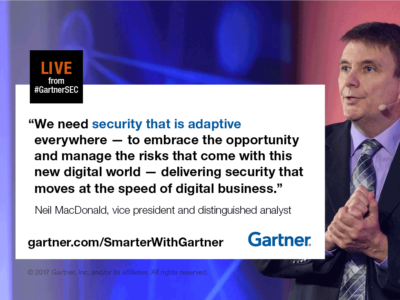Six Tactics to Balance the Growing Demands of Data and Analytics.
A successful chief data officer (CDO) requires the skills of a seasoned high-wire performer — the ability to remain consistently stable and agile. Like high-wire artists, high-performing data and analytics leaders must keep balanced, all the while serving multiple stakeholders, adapting to constant business “winds of change” and staying current on innovation.
“In the rapidly emerging arena of data and analytics, the role of the CDO can be one of the most challenging positions within an organization,” says Valerie Logan, research director at Gartner. “These leaders are as diverse as the data they analyze, originating from backgrounds as varied as 25-year veterans of data and analytics organizations to newly emerging graduates from university data science programs.”
Gartner has developed six key “survive and thrive” strategies that should help CDOs balance the growing demands of data and analytics.
1. Clarify and communicate your data and analytics charter
A clear charter includes a simplified vision of what a data-driven organization looks like in practice, a mission statement of what the organization does, and a narrative that makes data and analytics real for those who don’t necessarily have a data management or quantitative background. Often part of a data and analytics business case, the charter should outline practical business outcomes that clarify intent, scope and focus. Lead by example, and with examples.
2. Adopt and communicate a bimodal approach
Designed to address this classic balancing act, Gartner defines a bimodal approach as “the practice of managing two separate, coherent modes of IT delivery, one focused on stability and the other on agility.” Deliberate management of resources and capacity to serve classic and emerging requirements are vital to a state of balance within a bimodal environment. Team structure should be regularly revisited to support growth and maintenance agendas.
3. Establish your data and analytics strategy, roadmap and critical path
For organizations maturing from a business intelligence (BI) to an analytics focus, modernizing the current BI strategy and roadmap will support the advancement of analytics and data science capabilities. Alignment with the respective information management strategy and roadmap is also vital for an integrated plan that closely monitors interdependencies across critical infrastructure initiatives, especially as architectures shift from classic data warehousing to more logical, virtualized environments.
4. Keep your strategy “live” with a quarterly cadence
The strategy, roadmap and critical path should be reviewed with key stakeholders every quarter. Conducting a regular inventory update maximizes collective resources across the community, while updating the inventory with the same frequency captures the new data sources, use cases, algorithms and tools/technologies employed across the community. Keeping strategy “live” is also a way to regularly share successes.
5. Become the “center of gravity” for analytics
The CDO should become the “center of gravity” for data and analytics endeavors, whether that’s by solving the problems within the immediate team, or by being aware of and broadcasting what is occurring across the data and analytics community. This includes endorsing and facilitating a self-service environment for a widening set of analysts and data scientists across the business, which will broaden impact and lessen the load on the core team.
6. Form a deliberate alliance with your data and analytics colleagues and partners
If certain data management, infrastructure or analytics coverage areas are not within the CDO’s direct charter or remit, then the close interlock with IT and other leaders across the business is crucial. The success of any data and analytics initiative depends on the quality, understanding and agility of the data. This becomes particularly critical as the analytics charter starts to require and accommodate a wider ecosystem of data, much of which will be sourced externally from emerging data brokers, social data sources and open data sources.
“CDOs need to be prepared to traverse the high wire of their roles with a ready set of tactics to counterbalance the daily winds of change blowing through the business,” says Logan. “Coaching and supporting this set of professionals through daily survival strategies, along with savvy change management tactics, are key to growing the next generation of impactful digital business professionals.”
Get Smarter
Client Research
Gartner clients can read more in the report “The Life of a Chief Data Officer: A High-Wire Balancing Act.”
Gartner Data & Analytics Summits
Gartner analysts will provide additional analysis on data and analytics leadership trends at the Gartner Data & Analytics Summits, taking place November 20-21, 2017 in Frankfurt, February 26-27, 2018 in Sydney, March 5-8, 2018 in Grapevine, Texas and March 19-21, 2018 in London. Follow news and updates from the events on Twitter using #GartnerDA.
Get Smarter
2017 Strategic Roadmap for Enterprise Information Management
Enterprise information management is a business-led program to structure all data and analytics initiatives to drive better business…
Engineers, architects and analytics leaders are excited about new technologies and grasp them quickly. But techies’ biggest challenge…










